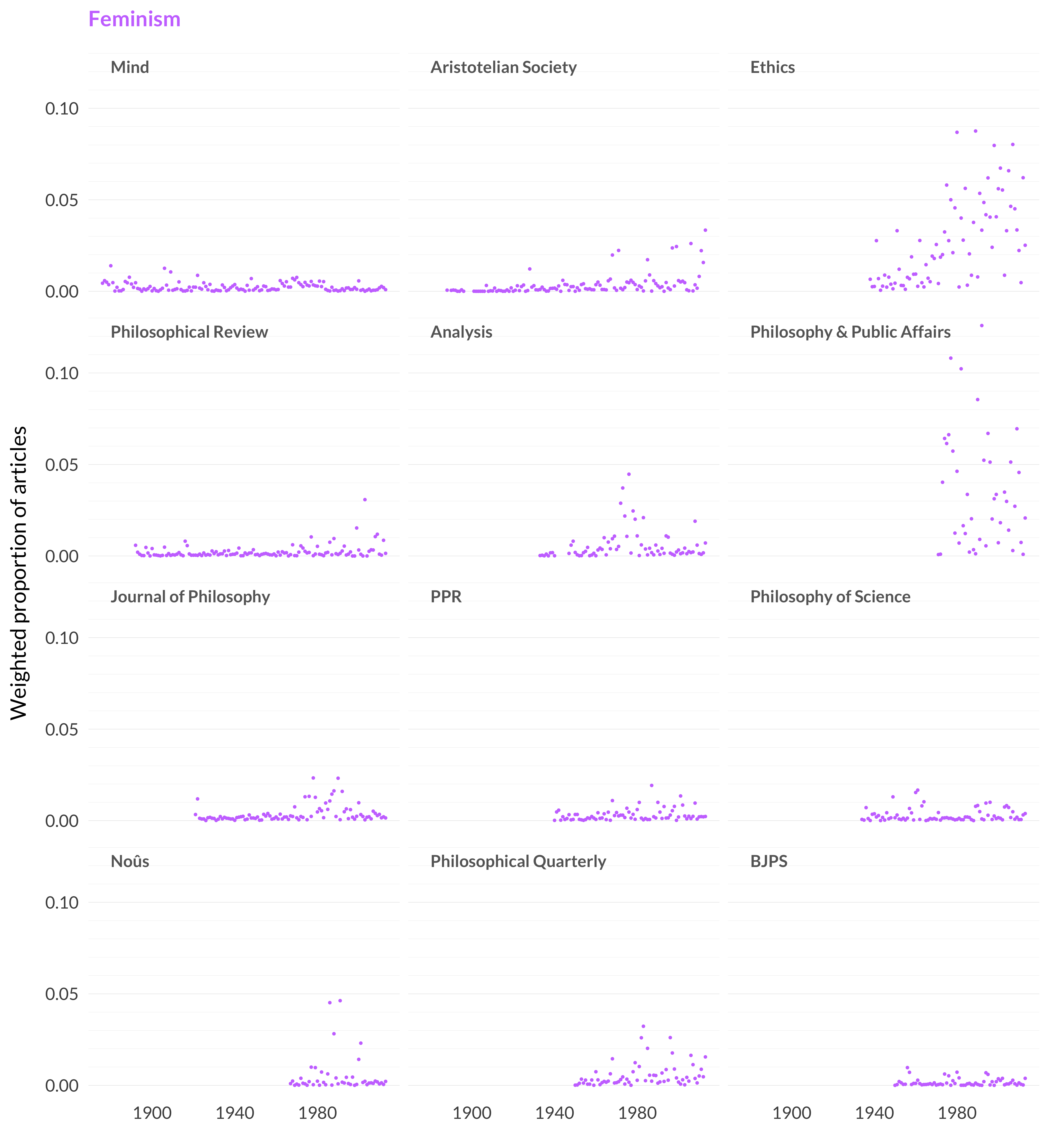2.69 Feminism
Category: Social and Political
Keywords: feminist, pornography, women, gender, marriage, sexual, sex, friendship, children, parents, friends, parent, family, discrimination, child
Number of Articles: 201
Percentage of Total: 0.6%
Rank: 74th
Weighted Number of Articles: 184.3
Percentage of Total: 0.6%
Rank: 84th
Mean Publication Year: 1987.1
Weighted Mean Publication Year: 1980.9
Median Publication Year: 1987
Modal Publication Year: 1980
Topic with Most Overlap: Egalitarianism (0.0477)
Topic this Overlaps Most With: Duties (0.0159)
Topic with Least Overlap: Formal Epistemology (0.00015)
Topic this Overlaps Least With: Space and Time (0.00017)

Figure 2.161: Feminism.

Figure 2.162: Feminism articles in each journal.
Comments
At first the graph for this surprised me. I didn’t think work on feminist philosophy in these twelve journals peaked in the 1970s and had been on a downward trajectory since. But, as with a few other topics, the key thing here is that the model does a better job of figuring out what debate people are talking about than it does at figuring out what side they are taking in it. For example, Moore’s “Refutaion of Idealism” ends up in idealism, and a lot of anti-feminist work ends up here.
In particular, there was a massive debate in Philosophy and Public Affairs during the 1970s about discrimination and affirmative action. Despite philosophers not having paid an enormous amount of attention to issues about equal opportunity before 1970, once affirmative action became a live possibility, it turned out that many philosophers were deeply committed to (a particular version of) equality of opportunity. And they were very keen to write about it. And that’s where a lot of the numbers here come from.
Very little of the important work in feminist philosophy prior to 2013 took place in these twelve journals, which is why the numbers here are so low. If the previous topic was a sign that we were carving things a little too finely, this topic is a sign that we’ve carved them just right. The amount of work in (or even engaging wth) feminist philosophy in these journals was low enough that when I ran these models with fewer than ninety topics, feminist philosophy typically got lumped in with other unrelated fields. I’m happy that this model found space for it on its own. But given the trends in the discipline, future iterations of this research project shouldn’t have nearly as much problem finding work in feminist philosophy.